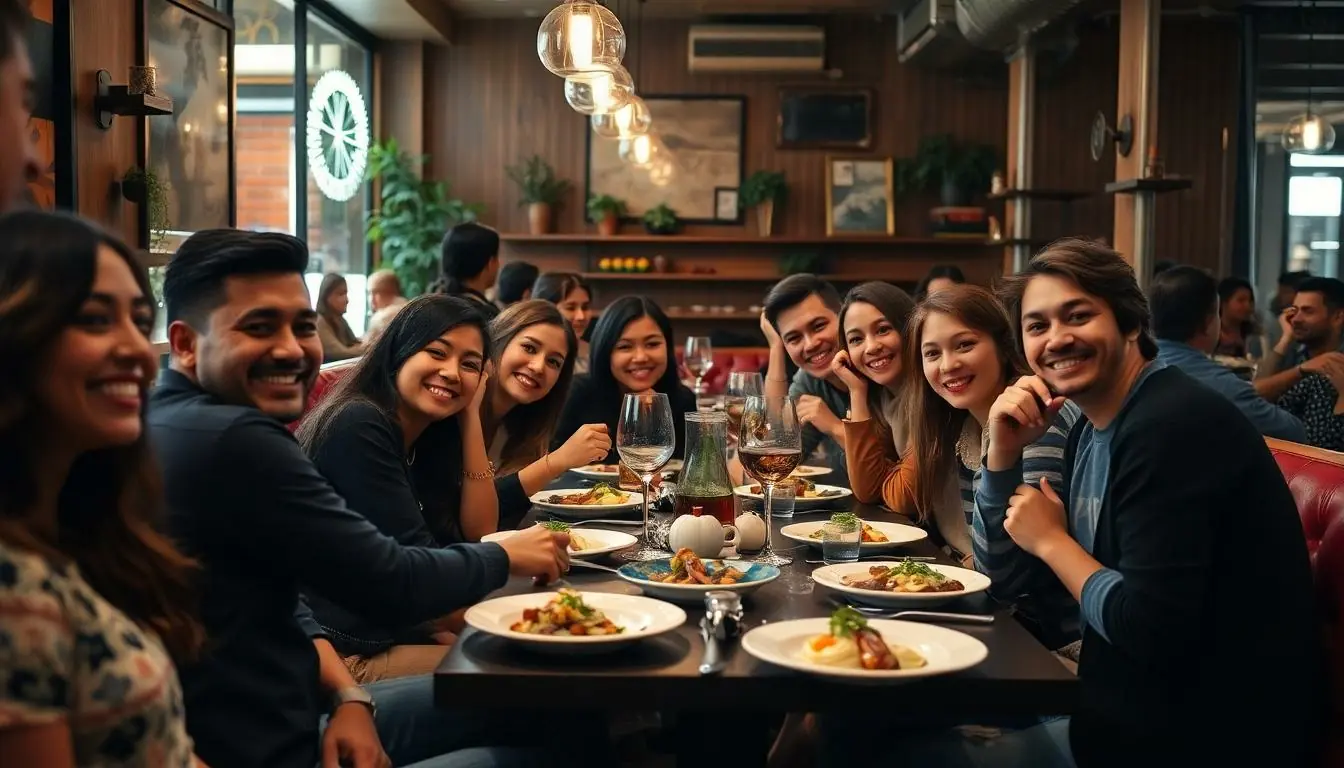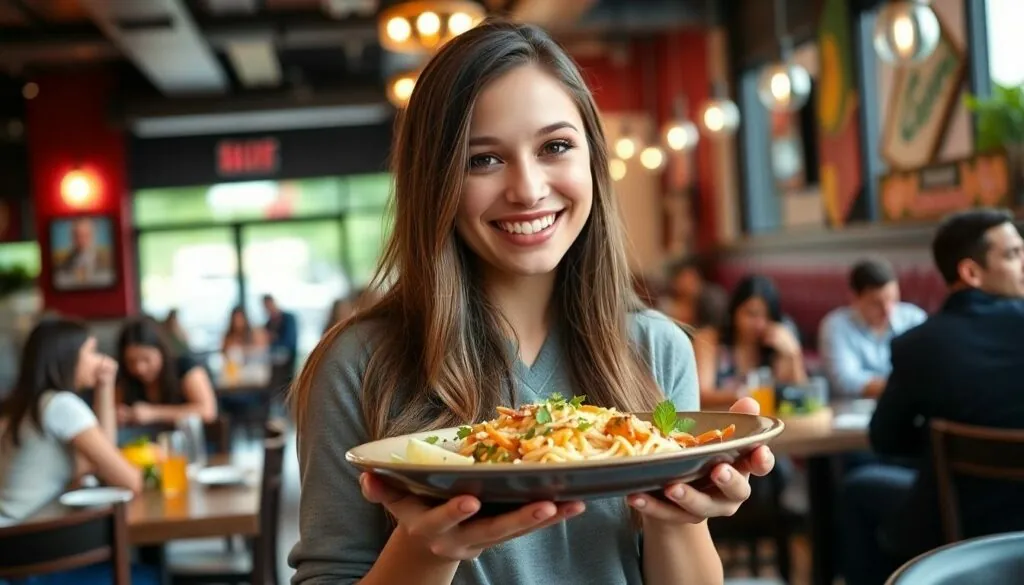In today’s digital age, social media isn’t just a nice-to-have for restaurants; it’s a must-have. With foodies scrolling through Instagram and TikTok for their next dining adventure, restaurants can’t afford to miss out on the latest trends. From drool-worthy food photography to engaging reels, the right social media strategy can turn a quiet Tuesday night into a bustling dinner rush.
Imagine your signature dish going viral, with customers lining up just to snap a pic for their feed. It’s not just about serving great food; it’s about creating an experience that diners can’t resist sharing. As the culinary landscape evolves, staying ahead of social media trends can be the secret ingredient to a restaurant’s success. Let’s dive into the newest trends that are sizzling in the social media kitchen and discover how they can spice up any restaurant’s online presence.
Table of Contents
ToggleOverview of Social Media Trends for Restaurants
Social media has transformed how restaurants engage with customers. Visual content remains a dominant trend. Platforms, especially Instagram, see a surge in food photography and enticing videos. Engagement through short-form content stands out, with TikTok leading in creativity and trends.
User-generated content plays a significant role. Customers often share their dining experiences, providing restaurants with authentic marketing material. Sharing these posts extends reach, showcasing the restaurant’s atmosphere and dishes.
Storytelling is increasingly important. Restaurants articulate their brand narratives through behind-the-scenes videos, chef spotlights, and menu development stories. This approach builds connections with diners and enhances brand loyalty.
Innovative partnerships emerge as another trend. Collaborating with influencers showcases menu items to targeted audiences. Influencers can amplify reach, providing credibility and exposure for less-known establishments.
Interactive content drives engagement. Polls, quizzes, and contests not only attract visitors but also foster a sense of community among followers. Leveraging these tools encourages diners to participate actively.
Sustainability has gained traction as well. Highlighting eco-friendly practices resonates with consumers who prioritize sustainable dining options. Restaurants sharing their sustainability initiatives often see increased customer loyalty.
Finally, utilizing social commerce stands out among recent trends. Allowing customers to order directly through social media platforms simplifies the purchasing process. This strategy can enhance overall sales and streamline customer interactions.
Key Platforms for Restaurant Marketing

Social media platforms play a vital role in restaurant marketing. They offer unique opportunities for engagement and visibility.
Instagram’s Visual Appeal
Instagram excels at showcasing food through vibrant images and videos. High-quality photos of dishes entice potential diners, making their mouths water. Hashtags amplify reach, allowing restaurants to tap into trending topics. Engaging Stories give behind-the-scenes glimpses, creating a personal touch. Collaborations with food influencers amplify visibility, attracting new followers. Engaging with followers through comments fosters a strong community, encouraging repeat visits.
Facebook for Community Engagement
Facebook serves as a hub for community interaction and event promotion. By sharing posts about daily specials and upcoming events, restaurants engage current followers while attracting new ones. Interactive features like polls and live videos encourage participation, making customers feel valued. Groups can connect local diners with restaurants, building loyal fan bases. Facebook Ads offer targeted marketing opportunities, optimizing reach based on location and preferences. Reviews and testimonials through customer interactions enhance credibility, helping establishments grow.
TikTok’s Viral Potential
TikTok holds significant potential for restaurant exposure through short, captivating videos. Creative content, like cooking demonstrations or staff challenges, captures attention quickly. Trend-driven challenges encourage user participation, generating organic reach and visibility. Leveraging popular sounds can elevate posts, making them more engaging. User-generated content showcases authentic dining experiences, enhancing community trust. TikTok’s focus on virality can lead to substantial increases in foot traffic.
Content Strategies for Success
Content strategies play a pivotal role in maximizing a restaurant’s social media potential. Focus on engaging posts that resonate with the audience.
User-Generated Content
User-generated content thrives in the restaurant industry. Diners posting photos or reviews build authenticity and trust. Encouraging customers to share experiences through specific hashtags can create a personalized connection. Featuring this content on the restaurant’s own social channels improves engagement and fosters community. Incorporating user stories into marketing campaigns showcases real-life moments that potential diners find relatable. Ultimately, leveraging user-generated content enhances brand reputation.
Influencer Collaborations
Influencer collaborations offer tremendous opportunities for restaurants. Partnering with local food influencers can effectively showcase menu items to targeted audiences. These influencers bring established trust and credibility, amplifying messaging to their followers. Establish connections with influencers who align with the restaurant’s brand values to maintain authenticity. Creative campaigns centered around meals or events can generate buzz on various platforms. Tracking engagement metrics following collaborations helps assess success and informs future strategies.
Leveraging Data and Analytics
Data analytics empowers restaurants to refine their social media strategies. Understanding audience behavior through engagement metrics plays a crucial role.
Tracking Engagement Metrics
Tracking engagement metrics allows restaurants to measure the effectiveness of their posts. Analytics tools reveal information on likes, comments, shares, and saves. Restaurants can identify which content resonates best by analyzing this data. Focused metrics include interaction rates and follower growth, helping to tailor future content. Regular assessment provides insights into peak engagement times too. Utilizing data to determine successful posts helps optimize content strategies consistently.
Understanding Audience Insights
Understanding audience insights enhances a restaurant’s ability to connect with diners. Demographic data reveals age, location, and preferences, guiding targeted campaigns. Analyzing customer feedback highlights popular menu items and service areas to improve. Restaurants benefit from monitoring trends in user-generated content, which can shape offerings and promotions. Engaging with audience insights fosters community interaction and strengthens brand loyalty. Refining marketing strategies based on this data ensures that restaurants meet customers’ expectations effectively.
The Future of Social Media Trends for Restaurants
Emerging trends indicate a shift towards immersive experiences in social media marketing for restaurants. Virtual reality and augmented reality features could enhance how diners interact with menu items online. Larger platforms are likely to integrate these technologies, providing customers with 3D views of dishes before ordering.
Local dining experiences will continue gaining traction through community-focused campaigns. Restaurants embracing hyper-local hashtags will likely resonate with residents, fostering a sense of belonging. Real-time engagement, such as live cooking demos or Q&A sessions with chefs, can boost community interaction and deepen customer loyalty.
Sustainability trends are expected to shape narratives on social platforms. Highlighting eco-friendly practices not only attracts environmentally-conscious diners but also aligns with broader consumer values. Menu transparency, showcasing sourcing practices, might become crucial for brand authenticity.
Moreover, social commerce is set to expand significantly. Tools that enable direct ordering through platforms like Instagram and TikTok streamline the customer journey, benefiting both diners and restaurants. Instant purchasing features could also increase impulse buying among users.
Short-form video content remains critical for restaurant marketing strategies. Captivating, 15 to 60-second clips can hook potential customers, especially on platforms such as TikTok. Engaging content that focuses on meal preparation or behind-the-scenes glimpses will likely drive user shares and spread word-of-mouth.
Data-driven strategies will continue evolving. Restaurants leveraging analytics effectively can tailor their content to resonate with target demographics. Monitoring engagement rates and customer feedback across various platforms remains instrumental in refining marketing approaches. This proactive management of social media presence ensures that restaurants align more closely with diner expectations and preferences.
Staying ahead in the competitive restaurant industry requires a keen understanding of social media trends. By embracing visual storytelling and user-generated content, restaurants can foster authentic connections with their audience. Collaborating with influencers and utilizing interactive content not only boosts engagement but also enhances brand loyalty.
As sustainability becomes increasingly important, restaurants that highlight eco-friendly practices will resonate more with consumers. The rise of social commerce and immersive experiences presents new opportunities for growth. By continuously analyzing data and adapting strategies, restaurants can effectively meet diner expectations and thrive in the digital landscape. Embracing these trends will pave the way for success in the ever-evolving world of social media marketing.





